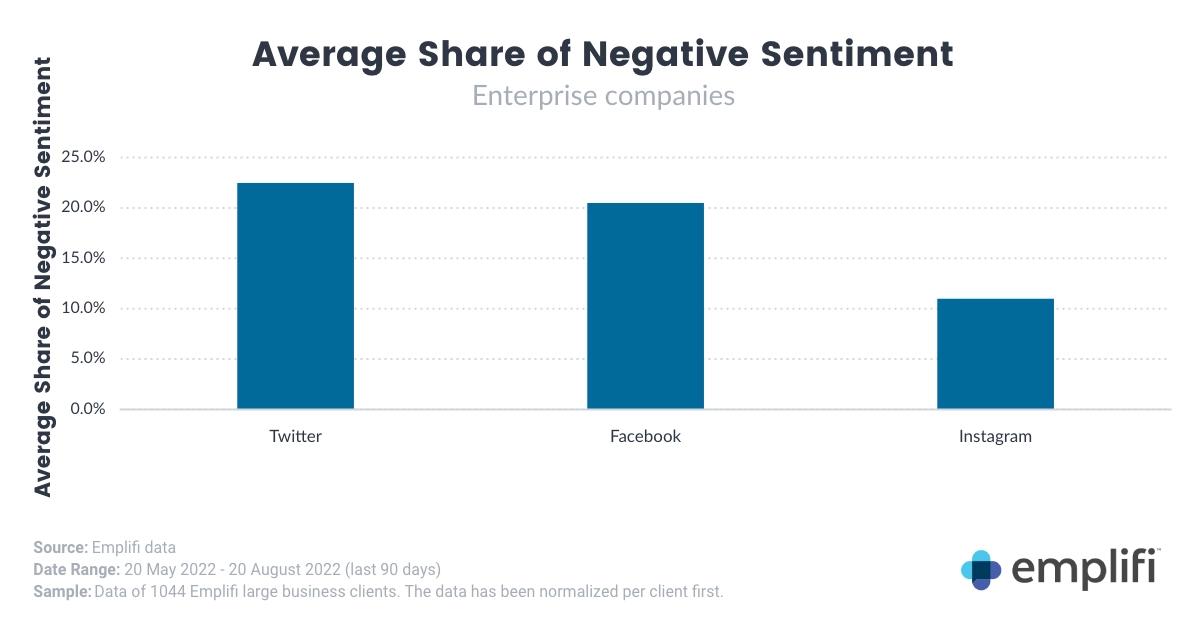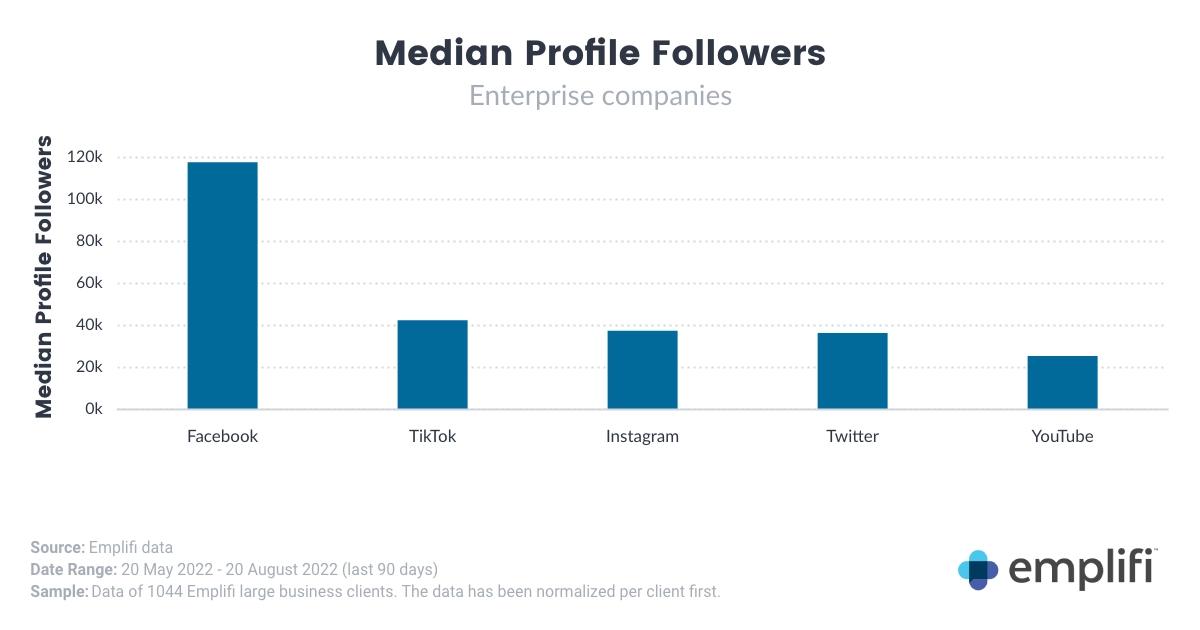This is part 2 of a blog series where we dive deeper into insights from the Emplifi CX Index. Access part 1 of our Emplifi CX Index blog series here.
In breaking down the findings from the Emplifi CX Index – which gives brands a look at how they compare to their peers when it comes to delivering a top-notch customer experience via social media – we recognized the importance of turning an eye toward the future as well. How brands have behaved in the past matters, but it’s also essential to recognize emerging trends so you can anticipate what’s likely to happen next.
After all, your team is planning for the future, not the past. You want to skate to where the puck is going, not to where it is now. Our key predictions provide you with the insight you need to get ahead of the trends and be ready for where social media is headed.
The Emplifi CX Index examines data from over 1,000 clients to give you a real-world peek at how other brands are using — and succeeding with — social media across a comprehensive range of industries.
There’s no slowing social media’s usefulness for customer care
The convenience and immediacy of social media as a customer care channel continues to draw consumers, as they and brands become more aware of its inherent advantages when responding to customer questions and problems. In fact, recent Emplifi research conducted by Harris Interactive found that social media surpassed other key channels as US consumers' preferred ways to communicate with brands.

At the same time, while 52% of consumers expect brands to respond to their questions within one hour, 39% report typically having to wait more than two hours to get one. As this trend picks up steam, brands will need one platform to manage every step of the customer experience on social media, and to consistently respond to customer concerns quickly.
As this prioritization gains momentum, it should impact the response rate across virtually every industry that engages in customer care on social. With consumers increasingly looking at social customer care as table stakes and brands prioritizing customer care as a key part of their CX strategy, brands' response rate on Facebook and Twitter will continue to grow, partly due to technology helping to drive efficiency and growing CX teams.

When we look at the sentiment of the questions that brands are receiving via social, we find that negative questions come most frequently via Facebook and Twitter. That trend should continue, though consumers may start to post more negative customer-care-related questions on Instagram and TikTok as they see their favorite brands use the platforms more frequently. When consumers ask negative questions, they seek an answer as quickly as possible and gravitate toward whichever channels most reliably get a prompt response.

Consumers' preference for video only continues to grow
It’s impossible to miss the increase in brands' usage of TikTok, Instagram, and YouTube — a signal that video is becoming more and more important for consumer marketing. If you’re not already prioritizing video in your marketing mix, it’s imperative to start thinking about how to incorporate it into your plans for social (more on that in a bit).
Brands' continued migration of their content toward video is, unsurprisingly, following a similar migration in consumer behavior. Facebook may still rule the roost when it comes to profile followers. However, the current Median Post Interactions figures we’re seeing may be a bigger harbinger for what’s to come — TikTok becoming the leading social media profile of choice for consumers to follow/interact with brands, and more companies adopting and growing their presence there.

Likewise, when it comes to post interactions, Instagram and YouTube are well-positioned to capitalize on the growing consumer preference for video content. The trends we’re seeing suggest brands will continue to grow their fan, follower, and subscriber base on Instagram and YouTube as video content’s momentum shows no signs of slowing in the next few years.

Meanwhile, Facebook has little room to grow when it comes to profile followers, and it’s currently not a channel that is built to feature video content in the same way as some of the other channels examined. That signals that Facebook’s growth in followers is likely to slow, even as its stranglehold on the top spot in this category remains formidable.
Posting volume trends favor Twitter and TikTok
You might expect posting volume trends to follow consumer behavior in much the same way active clients do. And, while they likely will to an extent, there are other factors at play.
When it comes to video content, quality always matters. Producing consistently high-quality videos can be expensive and time-consuming, whereas it takes fewer resources to type out a couple of paragraphs – or source user-generated content. That’s why we see video remaining lower in use than more text- or image-oriented content. Although, that means there’s a big opportunity for brands willing to put forth the necessary resources to make their brand stand out with video content in 2023 and beyond.
Despite its recent headline-grabbing news — and what it will mean for the network moving forward — Twitter has an inherent advantage over the other channels due to the platform’s ease of use, enforced brevity, and users' expectations of speed. That means that Twitter will likely remain the leader in posting volume for some time, even if the overall brand and consumer usage trends don’t always favor it.

However, video will continue playing a bigger role, especially if it’s shorter in length. That, again, means good things for the channels that focus on it.
We expect TikTok to continue to pace forward as more brands develop a strategy around it and see positive results. It’s perfectly positioned to take advantage of the trends we’re seeing going into the next few years, while YouTube’s longer-form video format seems likely to stay fairly flat rather than show steady growth.
While Instagram is increasingly embracing video with Reels, it’s to be determined whether it will allow them to stop the momentum of more short video-centric channels like TikTok. We expect the momentum of brands' posting on Instagram to slow down over time, despite the boost from Reels. At the same time, brands' post volume on Facebook may decrease slightly due to the greater shift to video content mentioned above.
Key takeaways
It’s not enough to look at past behavior. As a brand, if you’re going to stay ahead of the competition, you owe it to yourself to take the next step and try to spin it forward to anticipate what these trends mean for the future. We hope sharing our expertise here can help give you the data and confidence you need in order to plan with that in mind.
Coming up in Part 3 of this series examining the Emplifi CX Index, we’ll discuss the next steps for forward-thinking brands. Now that you have this knowledge, what are the next steps you should take to prepare your marketing and CX teams for where social media is headed next? We’ll provide you with actionable steps you can take to ensure your brand is not just bracing for the future but embracing the evolution of consumer behavior with a strategy that knows what to expect.
In the meantime, you can start to better understand how your social media performance stacks up to your industry peers by getting your personalized Emplifi CX Index evaluation. Just fill out the quick form, and get a personalized report that gives you a look at where you’re excelling and where there’s room for improvement going forward.



























